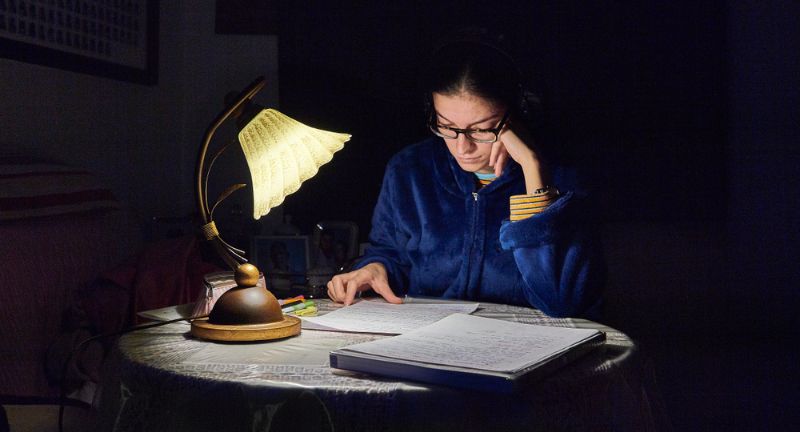HUMAN INTEREST / VIRAL
10 Wives Tales That Have Been Debunked
Published
2 weeks agoon

Shutterstock
Wives’ tales have woven their way through the fabric of society, passed down from generation to generation, often coloring our understanding of health, wellness, and the world around us. These tales range from quirky advice about everyday life to explanations of more complex phenomena, generally without a basis in scientific fact. Nevertheless, they persist in our culture, sometimes influencing behavior and decisions with a blend of superstition and practical wisdom. While modern science has debunked many of these myths, they continue to be shared and believed by many. This exploration of ten popular wives’ tales provides a glimpse into the fascinating interplay between folklore and fact, revealing the enduring power of storytelling in human culture.
Eating Carrots Improves Night Vision

Shutterstock
The belief that eating carrots improves night vision is a common wives’ tale rooted in truth but exaggerated. Carrots are rich in beta-carotene, which the body converts into vitamin A, crucial for maintaining healthy eyesight. However, the idea that they can enhance night vision to any significant degree is a myth, originating from British propaganda during World War II to explain the effectiveness of their pilots’ night flying. While beneficial for overall eye health, eating carrots won’t give you superhuman night vision.
Cracking Your Knuckles Causes Arthritis

Shutterstock
Many people believe that cracking your knuckles will lead to arthritis, but scientific studies have not found a direct link between the two. The sound of cracking knuckles comes from the bursting of gas bubbles in the synovial fluid surrounding the joints. While habitual knuckle cracking isn’t likely to cause arthritis, it can lead to reduced grip strength and swelling in the hands over time. So, while it’s relatively harmless, frequent knuckle crackers might want to moderate their habit.
Swallowed Gum Stays in Your Stomach for Seven Years

Shutterstock
The idea that swallowed gum stays in your stomach for seven years is a myth. Gum is largely indigestible, but it does not stay in the stomach. Instead, it passes through the digestive system relatively intact and is expelled in the stool. Parents often use this tale to discourage children from swallowing gum, although it’s harmless in most cases.
Going Out with Wet Hair Will Make You Sick

Shutterstock
The belief that going out with wet hair will make you sick is another widespread wives’ tale with no basis in medical reality. Colds and flu are caused by viruses, not by cold weather or wet hair. However, being cold can make you more susceptible to catching a virus if you’re already exposed, as it may lower your immune defenses. Nevertheless, wet hair itself is not responsible for making people sick.
Sitting Too Close to the TV Damages Your Eyes

Shutterstock
Sitting too close to the television is often claimed to damage eyesight, a tale believed to cause strain and long-term harm to the eyes. Modern televisions, especially LCD, LED, and Plasma screens, do not emit levels of radiation that could cause any harm, unlike older generation cathode ray tube (CRT) TVs. While sitting closer than necessary might cause temporary eye strain or fatigue, it does not cause permanent damage to the eyes. Encouraging children to sit a reasonable distance from the television is more about promoting comfort and avoiding unnecessary strain.
You Can Catch a Cold from Cold Weather

Shutterstock
The idea that cold weather itself can cause a cold is a common misconception. Colds are caused by viruses, and while it’s true that colds are more prevalent in cold weather, this is because people tend to spend more time indoors and in close proximity to others, which facilitates virus transmission. Cold air alone does not make you sick; however, it can dry out the lining of your nasal passages and make it easier for a virus to infect you. Dressing warmly and maintaining good hygiene can help prevent the spread of viruses, regardless of the weather.
If You Touch a Toad, You’ll Get Warts

Shutterstock
Touching a toad giving you warts is an old wives’ tale without any scientific backing. Warts are actually caused by an infection with the human papillomavirus (HPV), not by toads or frogs, which might have bumpy skin textures that resemble warts. These bumps are glands that help the creatures stay moist; they are not contagious to humans. This tale likely originated as a simple way to deter children from handling possibly venomous amphibians.
Full Moon Affects Behavior

Shutterstock
The belief that the full moon influences human behavior has been widely held, with claims linking it to increases in crime, emergency room visits, and psychiatric disturbances. However, extensive studies have found no significant correlation between the full moon and changes in human behavior. This myth persists, perhaps due to confirmation bias and folklore. While the moon can affect the tides, its influence on human behavior remains a popular but scientifically unsupported legend.
Heartburn During Pregnancy Means a Hairy Baby

Shutterstock
One charming old wives’ tale suggests that experiencing heartburn during pregnancy indicates that the baby will be born with a full head of hair. While this may sound like mere superstition, there is actually a small scientific study that found a correlation, not a causation, between the severity of heartburn and the fullness of a newborn’s hair. This correlation may be due to higher levels of hormones that can cause both heartburn in the mother and fetal hair growth. Nevertheless, heartburn is more accurately just a common symptom of pregnancy due to the growing uterus putting pressure on the stomach, and not a method to predict hairiness.
Reading in Dim Light Ruins Your Eyesight

Shutterstock
Reading in dim light is often blamed for ruining eyesight, a myth that likely started to prevent eye strain. While reading in poor lighting can lead to temporary eye fatigue, it does not cause lasting damage to the eyes. Eye strain can manifest as temporary discomfort, including headaches, sore or irritated eyes, and difficulty focusing. It is always more comfortable and advisable to read with sufficient lighting to avoid these temporary symptoms, but rest assured, it won’t cause permanent vision loss.
Conclusion

Shutterstock
As we’ve explored these age-old wives’ tales, it becomes evident that while they may lack scientific backing, they hold a significant place in cultural folklore and family traditions. These tales often stem from a time when understanding of the natural world was more mystical than empirical, serving both as explanations for the unexplained and as early attempts at health and wellness advice. They remind us of the human propensity to seek patterns and meanings—even when the connections may be spurious. Despite being debunked by modern science, these stories persist, continuing to offer comfort, entertainment, and a sense of continuity with the past. In acknowledging their place in our cultural tapestry, we appreciate not just the tales themselves, but also the generations who have passed them down to us.
Related Topics:

More From Lifestylogy
-


Keanu Reeves Plays Catch With Young Fan Before His Dogstar…
-


Man Who Gained TikTok Following Playing Dead Set to Appear…
-


8th Grader Shocked When Brother in Navy who she Hadn’t…
-


Content Creator Shares Story of Signs that Lead to Her…
-


More: Little Taylor Swift Fan Reacts To Midnights Album Release
-


Nevada: Las Vegas Sphere Wears Pumpkin Costume for Early Halloween…
-


11-Year-Old Girl Facing Surgery At Cleveland Clinic Dances Herself There,…
-


More: D.C. Revelers Compete In 35th Annual 17th Street High…
-


TikToker Captures Strange Chroming Phenomenon of Ballooning Cap on Spray…